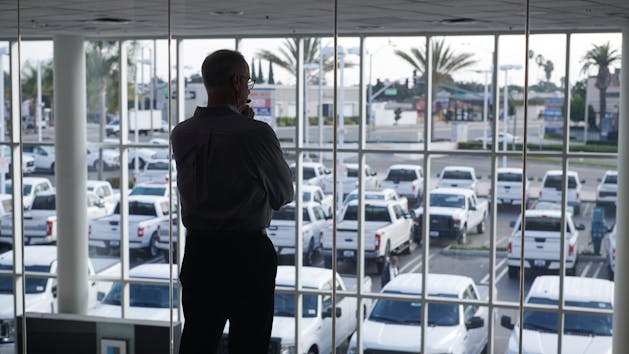Find the right solution for your business with our free Fleet Management Buyer’s Guide.
Technology Innovation Driving Fleet Modernization
Commercial fleet owners and operators are becoming increasingly aware the trucking industry is in the middle of what could prove to be a major shift centered around the integration of technology across every system. Advances in automated solutions and management tools make positioning your business as top-of-the-line, highly efficient and fully equipped with the latest in analytics tracking devices a full-time job.
Additionally, there is mounting concern that advances in autonomous vehicles, such as those being tested by major tech and transportation companies, could create competition for drivers and carriers, eventually rendering drivers obsolete.
The prospect of autonomous commercial fleets
As far into the future as this world may sound, industry concerns about self-driving trucks and delivery systems are not unsubstantiated fears. Recent moves within the transportation industry have made a big splash where non-commercial players are appearing to enter into competition with traditional trucking operations with autonomous fleets.
Owners aren’t the only ones worried about the prospect of large technology companies entering the commercial trucking industry. Drivers now have the added fear that self-driving trucks might be a close reality versus a problem future generations would have to handle.
Double back on autonomous trucking enterprise
To the relief of many, the rideshare behemoth recently announced the end of its autonomous truck research division to instead focus on self-driving cars full-time. Following this announcement, many are wondering how long it will be until another major technology company tries to enter the commercial fleet space to disrupt the industry as we know it. Some industry leaders are saying that while self-driving cars would be the current priority, investing in self-driving trucks to move freight across the country would happen down the line.
But the relief that a slower transition to autonomous trucking brings does not mean similar technology is not already making an impact. For example, the technology used in artificial intelligence (AI) and machine learning are making waves in telematics, notably in video systems. Modern video solutions are offering the ability to analyze events and automatically alert managers and owners to incidents that require attention, bring a breadth of new data without adding significantly to the burden of data management.
Temporary relief signals movement to modernize
According to Gartner, by 2020 approximately one in five vehicles on the world’s roads will have some form of wireless connection. Not surprisingly, more than 50% of small businesses are likely to increase their budgets for productivity apps within the next two years. Fleet Owner projects growth of 22% by 2020 in the number of vehicles that have video systems as well, which would total more than 1 million. When it comes to safety automation in commercial fleets, telematics solutions offer easy ways for businesses to improve safe driving habits as well as streamline compliance with the latest mandates.
The playing field is level-setting for fleet operations of any size to utilize the same tools to create the greatest amount of efficiency from their equipment and safety from their drivers. Trucks that do not have factory-installed can still rely on aftermarket devices and can be easily tied into a network to work seamlessly alongside built-in products.
Managers have a responsibility to their business to use the latest automation solutions to streamline the day-to-day management of their drivers’ operating behaviors. If managers are not in-tune with maintaining healthy work-life balance for their drivers, as well as using all available data points to help them increase their efficiency, it’s only a matter of time until the industry is left with inexperienced drivers completely dependent on automated solutions.
In essence, businesses that use data in an actionable way will be the survivors and those who ignore industry progress through technological integration will slowly fall behind and ultimately disappear. The ability to proactively understand vehicle maintenance, driver behavior, and operations inefficiencies to make steps toward reducing cost and downtime is a tremendous strategic advantage for businesses large and small. A short-sighted approach focused on achieving immediate needs with minimal investment might initially increase profit margins, but neglecting to invest in your business with a future of unknowns looming leaves you open to losing out on larger profitability down the road.
Find out how our platform gives you the visibility you need to get more done.



